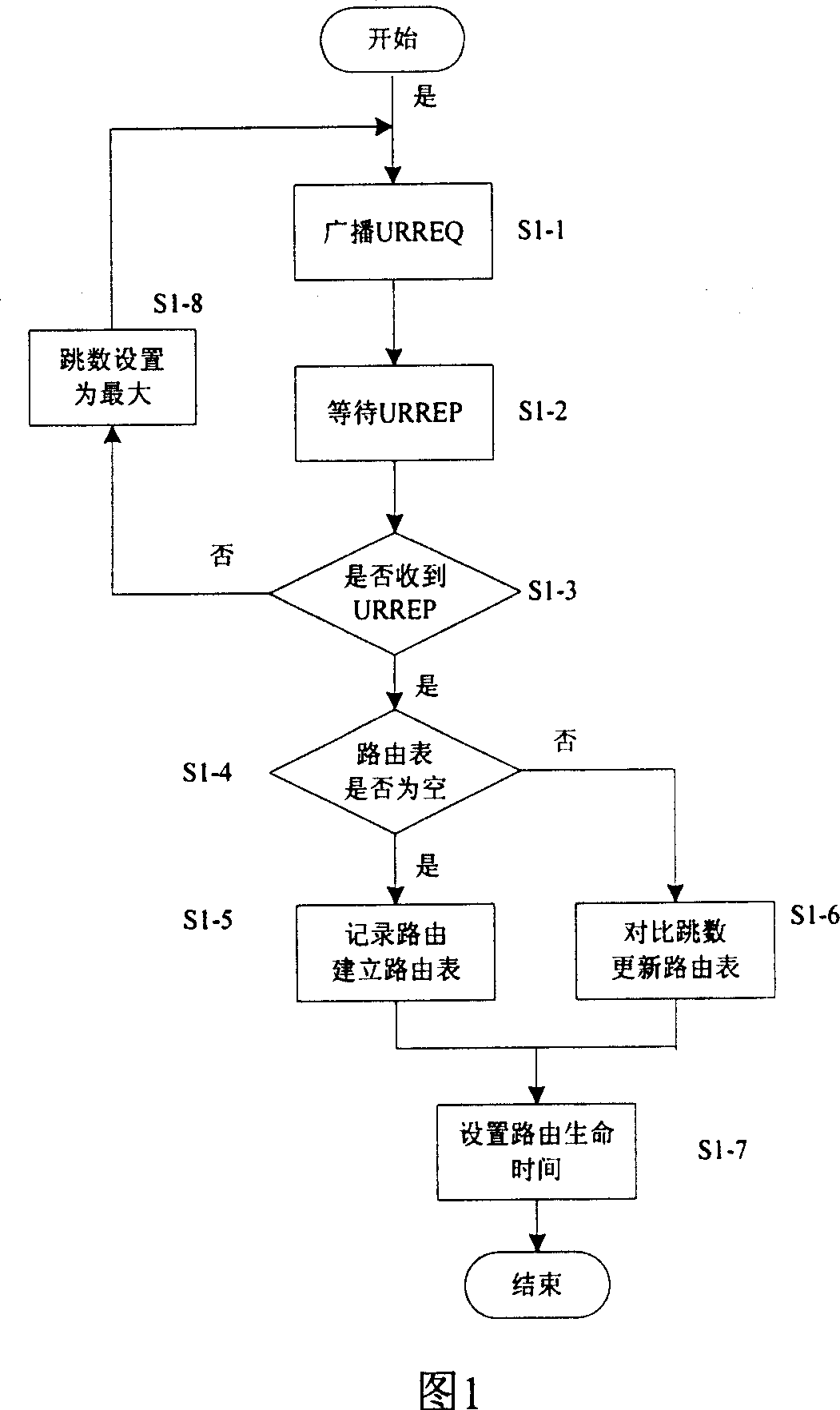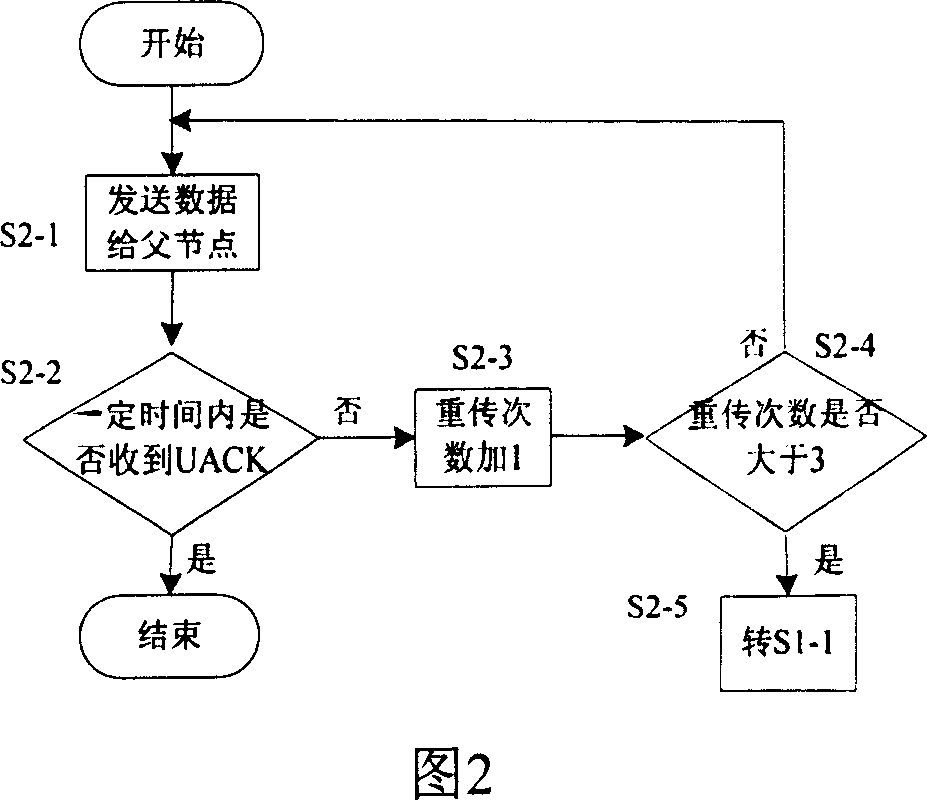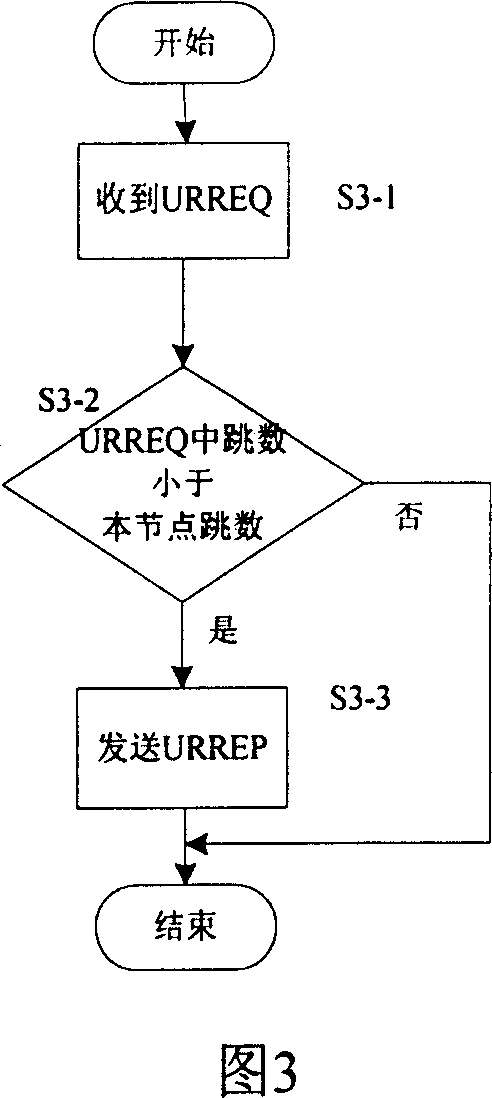Radio senser network up and down isomeric routing method
A wireless sensor and sensor node technology, applied in data exchange networks, transmission systems, digital transmission systems, etc., can solve the problems of increased network overhead and delay, and reduced uplink routing efficiency, and achieves simple and easy implementation of algorithms and network overhead. Small, easy-to-achieve effects
- Summary
- Abstract
- Description
- Claims
- Application Information
AI Technical Summary
Problems solved by technology
Method used
Image
Examples
Embodiment Construction
[0066] The present invention will be further described below in conjunction with a specific embodiment and the accompanying drawings.
[0067] With reference to Figure 1, the processing procedure for establishing an uplink route in this embodiment is as follows:
[0068]S1-1 This node sends an uplink route request URREQ. The URREQ packet format is shown in Figure 7, which contains the hop count of this node.
[0069] S1-2 waits for the uplink route within 1 hop to reply URREP. Refer to Figure 8 for the format of the URREP packet, which includes the number of hops for sending URREQ nodes.
[0070] S1-3 whether URREP was received within a certain period of time. If received, go to S1-4; otherwise, go to S1-1.
[0071] When S1-4 receives the URREP, it judges whether the routing table of this node is empty. If it is empty, go to S1-5; otherwise, go to S1-6.
[0072] The S1-5 routing table is empty, and the parent node address and hop count are recorded in the upstream routing table.
...
PUM
 Login to View More
Login to View More Abstract
Description
Claims
Application Information
 Login to View More
Login to View More - R&D
- Intellectual Property
- Life Sciences
- Materials
- Tech Scout
- Unparalleled Data Quality
- Higher Quality Content
- 60% Fewer Hallucinations
Browse by: Latest US Patents, China's latest patents, Technical Efficacy Thesaurus, Application Domain, Technology Topic, Popular Technical Reports.
© 2025 PatSnap. All rights reserved.Legal|Privacy policy|Modern Slavery Act Transparency Statement|Sitemap|About US| Contact US: help@patsnap.com



